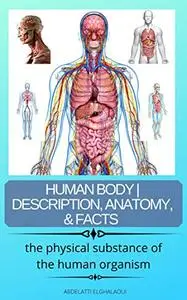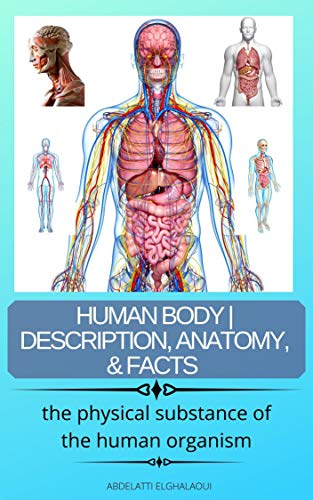Human Body | Description Anatomy & Facts : The Physical Substance of the Human Organism by Abdelatti Elghalaoui
English | 2020 | ISBN: N/A | ASIN: B08F4LPMS4 | 213 pages | EPUB | 7.80 Mb
English | 2020 | ISBN: N/A | ASIN: B08F4LPMS4 | 213 pages | EPUB | 7.80 Mb
physical activities. Increasing flexibility can also improve quality of life and functional inde- pendence. Good flexibility aids in the elasticity of the muscles and provides a wider range of motion in the joints. It provides ease in body movements and everyday activities. A simple daily task such as bending over and tying shoes is accomplished better with flexibility.
Unfortunately, flexibility is generally not a focus of people wanting to start a fitness pro- gram. In fact, many times it is minimally addressed or neglected altogether. While the benefits of regular cardiovascular and strength training exercise are well known, few people realize that flexible joints and regular stretching are also essential for optimum health and activity. Recently, many whole-body fitness and wellness programs, such as yoga and Pilates, which incorporate some flexibility training, have increased in popularity. While these programs may improve the flexibility of individual body segments, their emphasis is not specifically aimed at improving the range of motion of all of the major joints. Yoga emphasizes balance in all areas, seeks to strengthen all muscle groups equally, creates balance between the mental and physical, and encourages moderation in everything. Yoga involves holding static poses while exploring breathing, physical feelings, and emotions. The increase in flexibility comes from holding the body in the desired poses. Pilates, on the other hand, is an exercise program that encourages the use of the mind to control the muscles. It emphasizes strengthening the postural muscles that help keep the body balanced and provide support for the spine. In contrast to traditional strength training programs that involve multiple sets and repetitions of a single exercise, a Pilates workout stresses few repetitions of each exercise and empha- sizes doing these movements with precise control and form. The increases in flexibility are primarily accomplished from the ballistic movements used to increase strength.
How much stretching should a person do every day? Usually, most stretching tends to be a very brief routine concentrating on the muscle groups of the lower body. The total time spent in a stretching routine hardly ever exceeds 5 minutes; people tend to stretch a particular muscle group for no more than 15 seconds. Additionally, the stretching usually occurs at the start of the exercise session. Even in sport training, stretching is given minor importance in the overall training programs. An athlete might spend just a little more time stretching than the average person. This is usually because it is part of a warm-up routine. After the workout, however, most athletes are either too tired to do any stretching or simply do not take the time to do it. To be the most effective, however, stretching should be performed both during warm-up before a workout routine and as part of a cool-down after the workout.
For any person, whether an athlete or not, a regular stretching routine can bring some interesting benefits. Research studies on hamstring injuries have shown that those people with the lowest flexibility have the greatest chance of injury. Interestingly, the type of increased flexibility needed for reducing injury did not come from doing stretching exercises right before the activity. Rather, the increased flexibility required for fewer injuries came only from doing weeks of stretch training. Additional research has shown that regular, intense stretching for a minimum of 10 minutes will bring some major beneficial changes in the neuromuscular–tendon units. Increased strength and endurance gains have been reported as well as improved flexibility and mobility.



